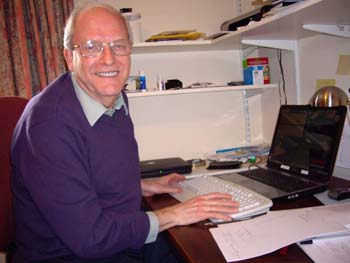Research Contradicts Climate Change Sceptics

Scientists from Lancaster and Durham Universities have challenged the controversial idea that global warming is caused by cosmic rays rather than by human activity.
Climate change sceptics argue that changes in cosmic rays coming to Earth determine cloudiness and temperature, leading to global warming. This theory has the radical implication that cutting carbon emissions is futile since climate change is not caused by burning fossil fuels.
But this new research casts doubt on the theory after finding no evidence of a link between the ionizing cosmic rays and the production of low cloud cover.
Emeritus Professor of Physics Terry Sloan of Lancaster University, who carried out the research with Emeritus Professor Arnold Wolfendale at Durham, said: “This is of vast significance because if the sceptics are right, it would mean we’re wasting our time trying to cut greenhouse gases. But we couldn’t find the link they were proposing which means we are right to be cutting carbon emissions.”
The cosmic ray theory was developed by Danish scientist Dr Henrik Svensmark at the Danish National Space Centre (DNSC) and featured in a controversial Channel 4 documentary “The Great Global Warming Swindle”, broadcast last year, which suggested that global warming was due to a decrease in cosmic rays over the last century. Cosmic rays are deflected away from Earth by our planet’s magnetic field, and by the solar wind – streams of electrically charged particles emanating from the Sun. Dr Svensmark suggested that when the solar wind is strong, the planet warms up because fewer clouds are produced and more of the sun’s heat reaches the surface.
Prof Sloan’s team investigated the link by looking for times and places on Earth which had documented weak or strong cosmic ray arrivals, and seeing if that affected the cloudiness – but they found no significant link.
Prof Sloan said: “I’m not an environmental scientist, I’m a particle physicist but I got interested in global warming and I watched the documentary. I was interested in the Danish claim because it’s of such vast importance. The implication is that we shouldn’t do anything about climate change – you just wait for the sun to come back to its normal state. I went into this with an open mind but we found no evidence for the Danish hypothesis. What we have found is that the Intergovernmental Panel on Climate Change has got it right – we need to cut carbon emissions.”
The IPCC last year concluded that since temperatures began rising rapidly in the 1970s, the contribution of greenhouse gas emissions has outweighed that of solar activity by a factor of 13 to one.
The research is published in the Institute of Physics' Environmental Research Letters.